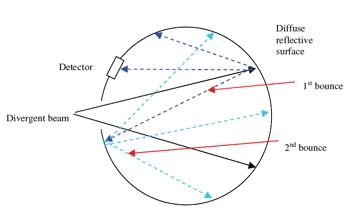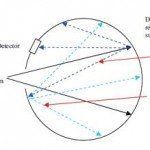There are many ways to measure laser output: You can use a photodiode, thermopile, or pyroelectric sensor. This post will discuss how a photodiode measures your laser (basics only) and what types of lasers it is suitable for.
Measurement Mechanism
Photodiodes measure laser power by using a semiconductor to convert light directly into an electric signal. Ophir’s patented background subtraction means you will measure only light from your laser, without ambient light from the room.

Types of Lasers
You can measure most low to medium power lasers with a photodiode based sensor.
- Powers from pW to mW (and even several watts when using attenuating filters, or tens of watts when using an integrating sphere)
- Wavelengths from UV to near IR (190 to 1800 nm)
Strengths

Photodiodes are by far the most sensitive form of laser power measurement, as well as one of the fastest. Fast photodiode sensor can have a response time of 0.01nanoseconds, while typical photodiode sensors will still be in the microsecond or millisecond range.
Other Considerations
Photodiode sensors have a distinct wavelength range, so be sure to choose the right device for your laser. They also have higher angular dependance. If that could be an issue for you (if your laser is not going to hit the sensor close to head on) speak to an Ophir representative to see what the best solution is for you.
Click here for more information on photodiode power measurement of lasers.










Leave a Reply
Your email address will not be published. Required fields are marked *